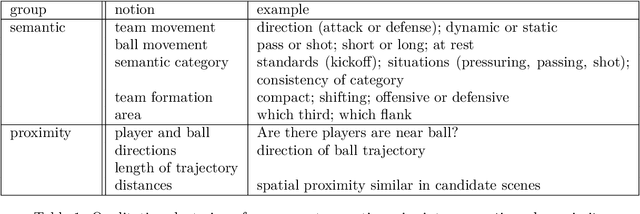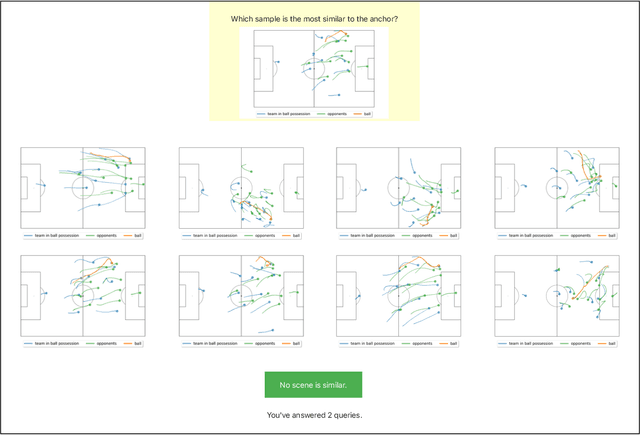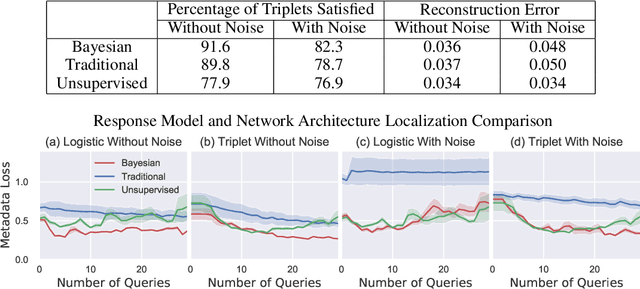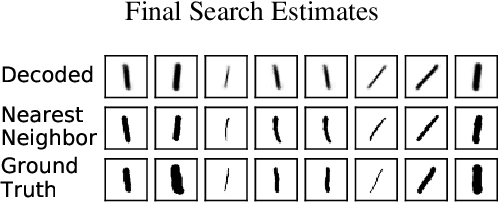Christopher John Rozell
Active Learning of Ordinal Embeddings: A User Study on Football Data
Jul 26, 2022



Abstract:Humans innately measure distance between instances in an unlabeled dataset using an unknown similarity function. Distance metrics can only serve as proxy for similarity in information retrieval of similar instances. Learning a good similarity function from human annotations improves the quality of retrievals. This work uses deep metric learning to learn these user-defined similarity functions from few annotations for a large football trajectory dataset. We adapt an entropy-based active learning method with recent work from triplet mining to collect easy-to-answer but still informative annotations from human participants and use them to train a deep convolutional network that generalizes to unseen samples. Our user study shows that our approach improves the quality of the information retrieval compared to a previous deep metric learning approach that relies on a Siamese network. Specifically, we shed light on the strengths and weaknesses of passive sampling heuristics and active learners alike by analyzing the participants' response efficacy. To this end, we collect accuracy, algorithmic time complexity, the participants' fatigue and time-to-response, qualitative self-assessment and statements, as well as the effects of mixed-expertise annotators and their consistency on model performance and transfer-learning.
Oracle Guided Image Synthesis with Relative Queries
Apr 28, 2022


Abstract:Isolating and controlling specific features in the outputs of generative models in a user-friendly way is a difficult and open-ended problem. We develop techniques that allow an oracle user to generate an image they are envisioning in their head by answering a sequence of relative queries of the form \textit{"do you prefer image $a$ or image $b$?"} Our framework consists of a Conditional VAE that uses the collected relative queries to partition the latent space into preference-relevant features and non-preference-relevant features. We then use the user's responses to relative queries to determine the preference-relevant features that correspond to their envisioned output image. Additionally, we develop techniques for modeling the uncertainty in images' predicted preference-relevant features, allowing our framework to generalize to scenarios in which the relative query training set contains noise.
 Add to Chrome
Add to Chrome Add to Firefox
Add to Firefox Add to Edge
Add to Edge